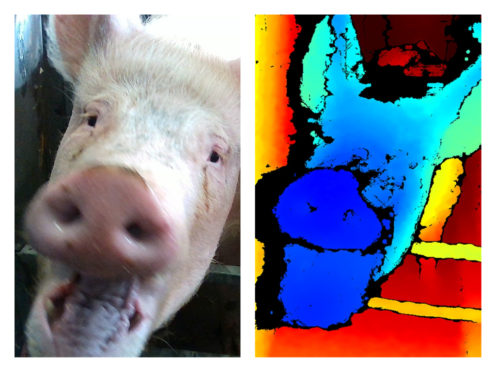Facial recognition technology to detect pigs’ emotions, especially pain and stress, is the subject of new trials.
Animal behaviourists at Scotland’s Rural College (SRUC) and machine vision experts at the University of the West of England (UWE) are working on a 3D and 2D facial image study which it is hoped will lead to new on-farm technology.
The study is based on previous SRUC findings which showed pigs can signal their intentions to other pigs using facial expressions. There is also evidence of expressions changing when they are in pain or under stress.
“By focusing on the pig’s face, we hope to deliver a truly animal-centric welfare assessment technique, where the animal can ‘tell’ us how it feels,” said Dr Emma Baxter of SRUC.
“This will allow insight to be gained into both short-term emotional reactions and the long-term individual ‘moods’ of animals under our care.”
Trials, based at SRUC’s Pig Research Centre in Midlothian, are being run to capture facial images of breeding sows under various commercial situations.
It’s hoped this will show that when sows experience lameness, for example, they will display different facial expressions relating to pain before and after pain relief.
The images will be processed at UWE’s Centre for Machine Vision, where machine learning is being developed.
After validating their techniques, the research team will develop the technology for on-farm use, working with commercial partners, where individual sows in large herds will be monitored continuously.
“Machine vision technology offers the potential to realise a low-cost, non-intrusive and practical means to biometrically identify individual animals,” said UWE’s Professor Melvyn Smith.
“Our work has already demonstrated a 97% accuracy at facial recognition in pigs. The next step is to explore the potential for using machine vision to automatically recognise facial expressions that are linked with core emotion states, such as happiness or distress, in identified pigs.”










